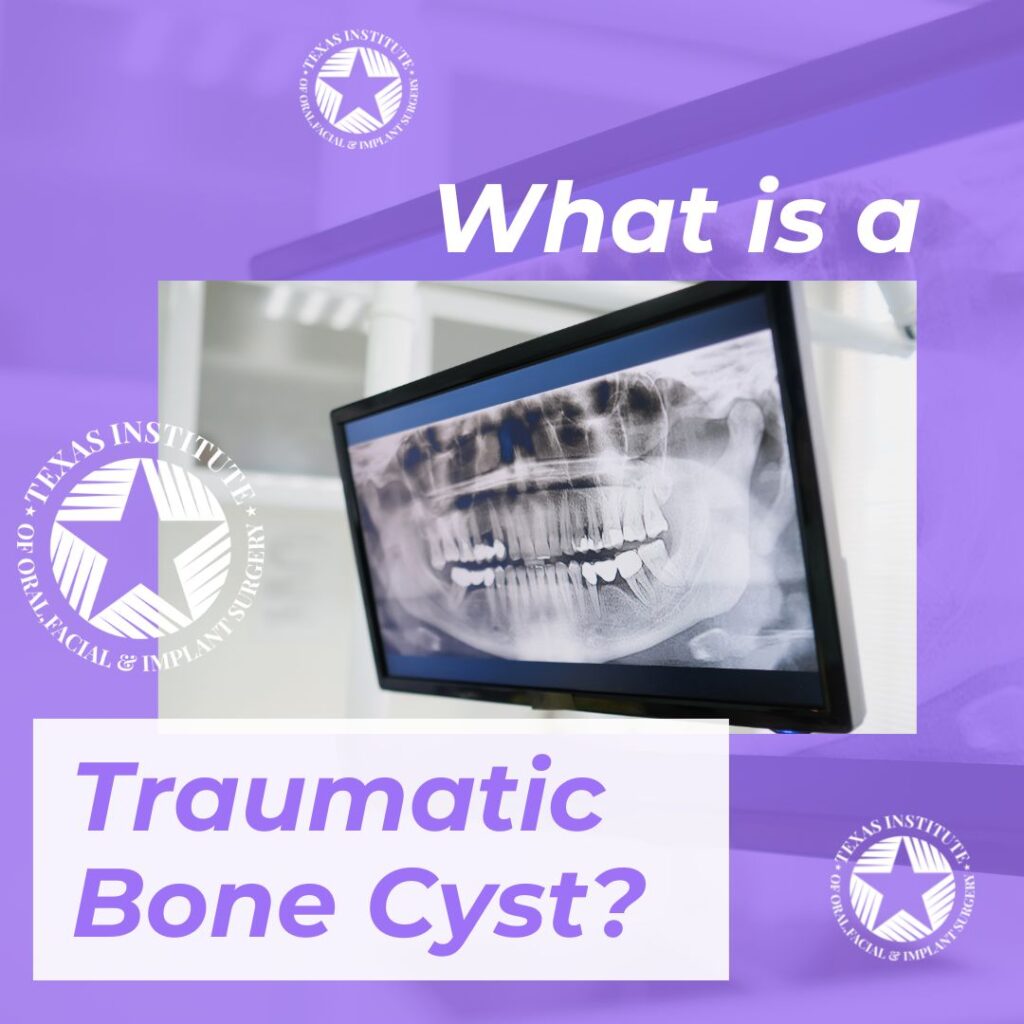Did you know you can develop a cyst within your jaw bone? This is one area of the body a lot of people don’t consider a place they should be concerned about when checking for cysts or tumors. That’s why dental checkups are important; so issues like a traumatic bone cyst can be spotted and treated at the right time.

How is a Bone Cyst Detected?
A cyst is a fluid filled sac which can be found in the jaw bone and is usually asymptomatic, meaning there are no symptoms indicating something is wrong. In rare cases, the cyst may grow and become large in size but usually will not result in any facial deformities. The cyst creates an empty cavity in the bone and can only be seen when an x-ray is taken.
When a patient has x-rays taken regularly, the dentist can detect any abnormalities or dark shadowing in the bone and will have the patient sent to an oral surgeon for further analysis. If a cyst is left untreated, it can grow and cause weakening of the bone in that space. This can result in the patient fracturing the jaw at any time.
Who is Affected By Bone Cysts?
Anyone can be affected by a traumatic bone cyst but it is typically found in youth and young adults between the ages of 10-20. The cyst frequently develops in the area behind the canine tooth (eye tooth) and around the molar region. The cause of such a cyst is still widely unknown but is very treatable without further cause for alarm in most cases.
How Can a Bone Cyst be Treated?
At Texas Institute of Oral, Facial & Implant Surgery, we believe in providing our patients with innovative care which improves their postoperative period and quickens the healing process. This is why we offer innovative Platelet Rich Fibrin or PRF during treatment. PRF is the use of your body’s own healing properties placed into the surgical area using platelets, white blood cells, fibrin, and stem cells to promote healing and repair the bone. The fluid will be drained from the cyst as any involved tissues are surgically removed and biopsied. After the area is cleaned out the PRF can then be inserted in and around the void inside of the surgical site. PRF increases the ability for the blood to clot greatly reducing the risk of any infections post-surgery, making it a successful option for treatment. Healing from a bone cyst can take anywhere from 3 months to a year. During this time healthy bone will be regenerating and there will no longer be any risk of bone fracturing occurring.
Speak With Expert
As with all procedures, there are instances where you may not be a candidate for certain forms of treatment. Texas Institute of Oral, Facial & Implant Surgery serves patients in the Midlothian, Waxahachie, Mansfield, Cedar Hill, and the greater Ellis, Tarrant, and Dallas County areas. If you are looking for friendly expert advice about a bone cyst, feel free to contact our office for a no-obligation consultation today.



